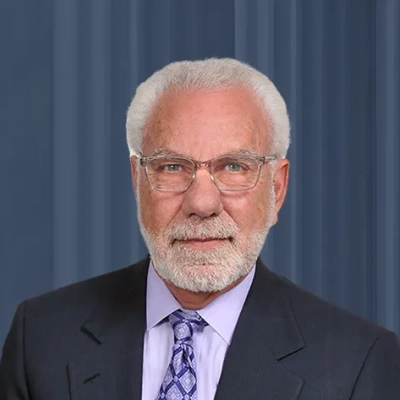9 Common Misconceptions About Personal Injury Law and How to Address Them
Personal injury law is often misunderstood, leading to confusion and missed opportunities for those who need legal help. This article explores nine common misconceptions about personal injury law, drawing on insights from experienced attorneys and legal experts. By addressing these misconceptions, readers will gain a clearer understanding of their rights and the realities of personal injury cases.
- Debunking the Ambulance Chaser Stereotype
- Proving Negligence Key to Injury Compensation
- Florida No-Fault Insurance Misconceptions Explained
- Early Legal Representation Protects Client Interests
- Insurance Companies Vigorously Defend Injury Claims
- Managing Expectations in Personal Injury Cases
- Personal Injury Cases Require Time and Effort
- Building Genuine Relationships with Injury Clients
- Most Injury Cases Settle Outside Court
Debunking the Ambulance Chaser Stereotype
One of the biggest misconceptions I encounter about personal injury law is the idea that we are simply "ambulance chasers" who prioritize financial gain over our clients' best interests. This stereotype not only misrepresents what we do but also minimizes the very real challenges that injured people face.
The truth is that personal injury law is about far more than financial compensation. At its core, it's about helping people rebuild their lives after something unexpected has turned their world upside down. When someone comes to me, they are often at the lowest point of their life - dealing with pain, uncertainty, and fear about the future. My role is to understand the full impact of their injury, not just the medical bills or lost wages, but how it has changed their daily life, their relationships, and their long-term goals.
We cannot turn back the clock. The only thing that our civil justice system allows is to seek compensation, which is a critical component of supporting my client's recovery. Pursuing the best possible outcome for my clients requires me to think strategically, assemble the strongest treatment team, retain experienced experts to speak to diagnosis, prognosis, and future care needs, and be a steady source of support to them as they navigate the process of finding their "new normal". I am an advocate, problem-solver, and counselor all in one.
When addressing this misconception, I explain that my job is not just to fight for a fair legal outcome. It is a privilege to be entrusted to become my client's voice - to ensure they are heard, communicate what life was before, and what life will be in the future due to their injury.
So no, I don't chase ambulances. I am not an opportunist looking for quick wins. I am an advocate who steps in when life has taken an unexpected turn, helping people access the resources, care, and justice they need to move forward.

Proving Negligence Key to Injury Compensation
One misconception I frequently encounter is that injury automatically equals compensation. Many people believe that simply being hurt in an accident entitles them to payment from the other party.
The reality is more complex. In Maryland, Virginia, and Washington, D.C., successful personal injury claims require proving another party's negligence directly caused your injury. Maryland and Virginia follow the contributory negligence rule, which can be particularly harsh - if you're found even 1% at fault, you typically cannot recover any compensation.
Consider this scenario: A pedestrian crossing the street gets hit by a driver who ran a red light. Clear-cut case, right? Not necessarily. If that pedestrian was distracted by their phone or ignored crossing signals, insurance companies will argue shared fault. Under contributory negligence, this could completely bar recovery.
When clients come to me with this misconception, I focus on what truly matters: not just that they were injured, but whether we can prove the other party bears full responsibility. I emphasize the importance of acting quickly to preserve critical evidence like witness statements, documents, and video footage before they disappear, preventing the other side from distorting what really happened.

Florida No-Fault Insurance Misconceptions Explained
The biggest misunderstanding here in Florida is about our "no-fault" insurance system. Potential clients frequently call me thinking that because they have Personal Injury Protection (PIP) coverage, they are barred from suing the driver who hit them. I immediately clarify that "no-fault" primarily just means their own insurance provides the first $10,000 of benefits, regardless of who was at fault. I then explain that if their injuries are significant and meet a legal threshold—such as a permanent injury, significant scarring, or loss of a bodily function—they absolutely can step outside the no-fault system and pursue a claim for pain and suffering against the at-fault driver's insurance. It's about educating them that PIP is just the first step, not the final word.

Early Legal Representation Protects Client Interests
I often hear potential clients say they want to "wait and see" before hiring an attorney because they think it's too aggressive or they can't afford it. I counter this by explaining that the most critical time for a case is the first few days after an accident. Insurance adjusters for the other side are trained to get recorded statements and offer quick, lowball settlements before the true extent of an injury is known. I emphasize that our involvement isn't about being aggressive. It's about being protective. We immediately take over all communication with the insurance companies to shield our clients. Then, I explain our contingency fee system: we only get paid a percentage if we win a settlement or verdict for them. There are no upfront costs, so they have nothing to lose by getting an experienced advocate in their corner from day one.
Insurance Companies Vigorously Defend Injury Claims
The first misconception deals with the way insurance companies approach defending injury cases. Depictions in the news media of insurance companies and businesses besieged by injury cases, as well as advertising by attorneys which misleads the public into thinking that lawyers will simply call or write a letter for a significant settlement, lead people to misunderstand the process. In actuality, insurers vigorously defend cases, and they do so very well with highly skilled defense lawyers and experienced adjusters who have a wealth of information and expertise at their disposal. A lawyer must take the time to relate to clients and explain the process from start to finish so that they can be educated as to how this works in the real world.
I describe this from the perspective of the insurer. They are able to mitigate the risks of any single claim across multiple claims, obtain significant claims savings across a company looking to attain seemingly small reductions in settlement value as a policy, as well as generate savings overall through relying on the fact that many injury victims are unwilling or unable to fight long term.
Another common misconception deals with the "type" of person who brings an injury case. Many people attach a stigma to injury victims as either people who were injured due to their own faults or flaws or are opportunistic and trying to take advantage of an insurance company or business. This is not limited to people who were minimally injured in questionable circumstances. I have seen countless examples of people who were significantly injured through no fault of their own and yet they feel guilty about bringing a claim against an insurance company, especially if it is their own insurance company in the case of an uninsured motorist claim.
This is also common in workers' compensation cases where people are afraid of bringing a claim against their employer, even though it will be fully covered by the employer's insurance. This can also impact the progress of a case as many people, clearly injured through no fault of their own, may be willing to bring a claim but unwilling to be seen as pursuing it if it is not resolved early. Other than talking to them about the process and explaining how insurance works, there is no good way to break through this as it is an internal bias that many people cannot seem to get through, as they are unwilling and unable to see themselves as one of "those" people who bring injury claims.

Managing Expectations in Personal Injury Cases
A common misconception I encounter is the "lottery ticket" mentality. Many people see high-profile verdicts on the news and assume their minor fender-bender case is worth millions and will resolve overnight. I address this by being direct and managing expectations from our very first meeting. I explain that the value of a case is tied directly to the provable damages—medical bills, lost wages, and the documented severity of the injury—not just the fact that an accident occurred. I walk them through the timeline of a typical case, emphasizing that insurance companies are businesses designed to minimize payouts, and achieving a fair result requires patience, thorough documentation, and strategic negotiation, not just a demand for a large sum of money.

Personal Injury Cases Require Time and Effort
A big misconception I often encounter is that people believe personal injury cases are resolved quickly, similar to what they see on TV. The truth is, these cases can be complex, especially when dealing with issues like product liability or proving fault in a car accident. Early in my career, I worked at a firm that focused on helping people who were injured through no fault of their own, and I witnessed how much effort it truly takes to build a strong case. You have to investigate the facts thoroughly, push back against insurance companies, and ensure nothing is overlooked. When I meet with clients, I explain that the process takes time because doing it correctly usually leads to a better outcome. I want them to understand that we are here to guide them through every step and ensure they are treated fairly.

Building Genuine Relationships with Injury Clients
One misconception we often see with personal injury law is that the public believes all personal injury lawyers are greedy, sleazy people who don't care about their clients. At our personal injury firm, we treat our clients like family from the beginning. We have an open-door policy that allows them to always stop by the office for a visit, even after their case is done. After a client's case is resolved, we remain in contact with them and often help them out in other matters that may arise in their lives because we genuinely care about them and their well-being.
Most Injury Cases Settle Outside Court
A common misconception about personal injury law is that people believe filing a claim automatically means you have to go to court for trial.
The reality is that the vast majority of personal injury cases are settled outside of court. Using strong evidence and compelling cases, personal injury lawyers' primary objective is to negotiate a fair settlement with the insurance company. A trial is almost always a last resort.
The steps in a personal injury case are investigation, presenting a demand, and then entering negotiations. A trial would only be pursued if the insurance company's offer is not fair to the client, and it would be a decision made with the client.




